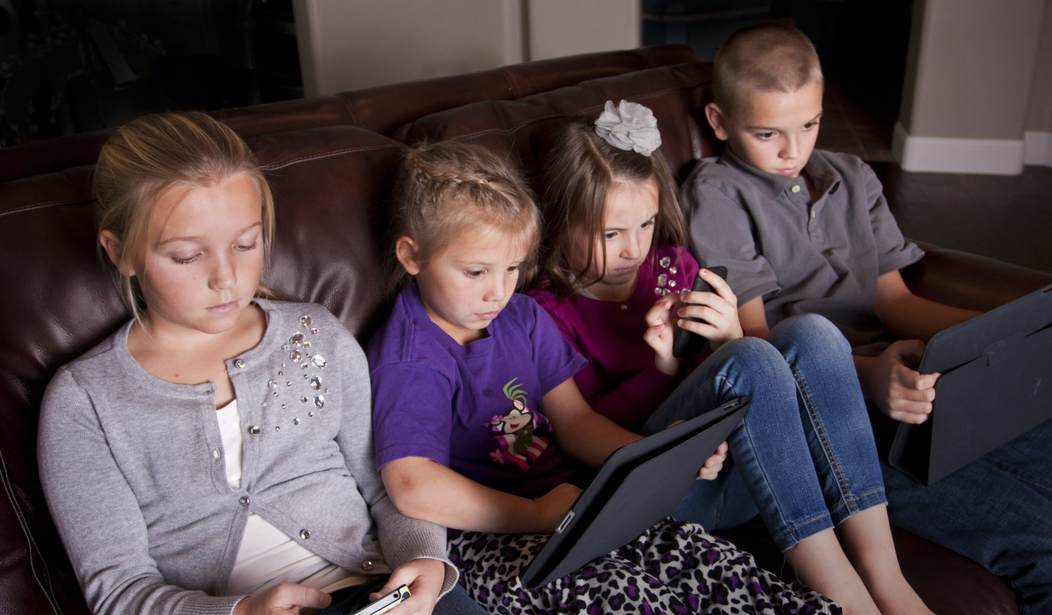Psychologist Dr. Nicholas Kardaras has made a career out of treating children with severe screen media addictions. One patient was so addicted to playing Minecraft on his tablet that, at the age of 6, he went into a catatonic state while playing the game in bed:
[His mother] found him sitting up in his bed staring wide-eyed, his bloodshot eyes looking into the distance as his glowing iPad lay next to him. He seemed to be in a trance. Beside herself with panic, Susan had to shake the boy repeatedly to snap him out of it. Distraught, she could not understand how her once-healthy and happy little boy had become so addicted to the game that he wound up in a catatonic stupor.
https://www.pinterest.com/pin/106397609926015433/
Unfortunately, Kardaras notes, this child is part of a growing trend among young children today.
Many parents intuitively understand that ubiquitous glowing screens are having a negative effect on kids. We see the aggressive temper tantrums when the devices are taken away and the wandering attention spans when children are not perpetually stimulated by their hyper-arousing devices. Worse, we see children who become bored, apathetic, uninteresting and uninterested when not plugged in.
… That’s right — your kid’s brain on Minecraft looks like a brain on drugs. No wonder we have a hard time peeling kids from their screens and find our little ones agitated when their screen time is interrupted. In addition, hundreds of clinical studies show that screens increase depression, anxiety and aggression and can even lead to psychotic-like features where the video gamer loses touch with reality.
Many devices now come with timers that allow parents to control how much time their children spend playing games, using apps or surfing social media. But, timers aren’t always enough. Children are often able to outsmart their parents, learning how to manipulate the timers rather quickly. What’s more, the presence of a timer indicates the lack of physical parental supervision. And, as all kids know, what their parents don’t know won’t hurt them.
https://www.pinterest.com/pin/88031367692440281/
The only surefire way to ward off tech addiction is to establish a culture of low to no-tech reliance at home. This means being an active participant in your child’s life at a young age and gearing their interests (and yours) away from the screens and into the real world.
Need a few ideas? See the next page for 10 ways to get your child off the screen and into real life:
Go on a hike. Bring along a field guide to identify flowers, trees, or birds. Make the hike a wilderness adventure, or even a scavenger hunt of sorts. “How many birds can we see today?”
Bike a local trail. My husband has many fond memories of biking with his parents and brother on sunny afternoons. Bring a picnic along and make a day of it!
Find a sport you enjoy playing or watching together. You don’t necessarily need to be athletic, you just need to appreciate watching a game. It doesn’t have to be a major league game, either. Many local sports leagues open games to the public for little to no cost.
Hit the library for the books, not the computers. Bonus points if you can find an actual physical card catalog still in use.
Check out a local theater or music performance. Before High School Musical was a movie, it happened every year right around the corner from your house. And don’t underestimate your child’s ability to follow the narrative. At four I loved watching my brother in his high school play.
Teach your child the joys of people watching. This is a great thing for dads to do with kids while mom goes shopping. Find a bench, sit back and let the show happen. It’s a great way to teach your children the power of observation. For younger ones, it’s about clothing color and simple actions. For older ones it’s about noticing who goes into what stores and how people relate to one another.
Participate in a volunteer activity. There’s always a fundraiser 5K to walk, a house to be built or a grocery bag to fill.
Have them “run” the errands. Have kids who are old enough to do the food shopping with minimal supervision? Put them in charge. Give them the list, set a stopwatch and see if they can do Supermarket Sweep.
Teach them the acronym D-I-Y. Do they want a new scooter? Have them design and build one. Do they need a new nightstand for their room? Get out the pencils, hammers and saws and start building. Too young? Legos or wooden blocks always do the trick!
Have a conversation. When all else fails you could… just… talk to your child. About anything, really. Kids actually love to have conversations when given the opportunity. It’s a great way for you to figure out how they communicate and what’s important to them.









Join the conversation as a VIP Member